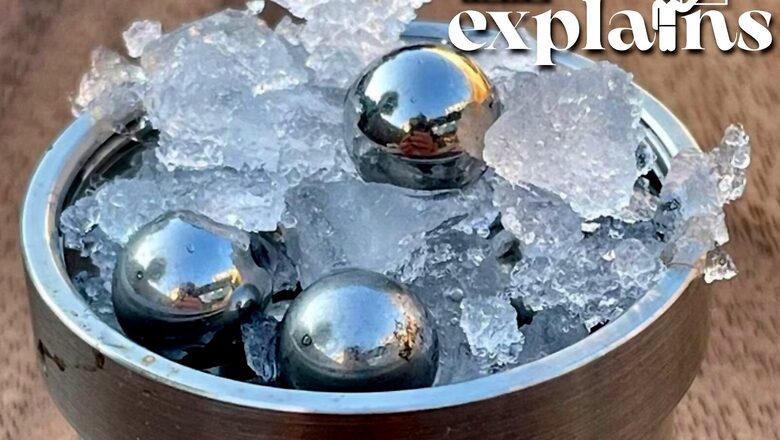
views
Scientists have produced a brand-new type of ice with a density extremely comparable to that of water. The researchers produced a white powdered ice with unique features by shaking a jar of ice and metal balls at extremely low temperatures, a report published in Science said.
The new ice has an amorphous structure, which means that rather than its molecules creating a tidy and ordered crystalline pattern, like those of liquid water, the new ice’s molecules are disorganised, Smithsonian reported.
How Did the Experiment Begin?
Water may appear to be an ordinary fluid due to its prevalence on Earth. But it has some peculiar characteristics, the report by Smithsonian explains, adding that water loses density as it cools and reaches its maximum density at four degrees Celsius. This is why ice cubes float in a glass of water. But that’s remarkable since, according to Emily Conover of Science News, most liquids become denser as they cool.
Water molecules typically form hexagonal connections as they freeze. Kenneth Chang of the New York Times reported that scientists have found 20 different crystalline forms of water ice.
When the experiment began, it was not the goal of the researchers was to create a novel form of ice. In the experiment, steel balls and normal ice were placed in a jar and cooled to minus 200 degrees Celsius while being shaken at a rate of around 20 times per second, just out of curiosity.
Christoph Salzmann, a physical chemist at University College London and co-author of the paper, told New Scientist that it was expected it would break the ice down into smaller bits. “But to our great surprise, something did happen.”
According to Salzmann, the metal balls’ “sheer force” reduced the ice to a fine white powder. To examine the powder’s molecular structure, the scientists used X-rays. The scientists discovered the ice had no structured structure at all as the X-rays scattered. According to Science News, a computer simulation showed how randomly moving ice layers could cause the structure to become amorphous.
What’s Special About This Ice?
The researchers said they employed a process called ball milling to vigorously shake ordinary ice together with steel balls in a container cooled to minus-328 degrees Fahrenheit (minus-200 degrees Celsius). This yielded what they called “medium-density amorphous ice,” or MDA, which looked like a fine white powder.
Ordinary ice is crystalline in nature, with water molecules – two hydrogen atoms and one oxygen atom, or H2O – arranged in a regular pattern. Amorphous ice’s water molecules are in a disorganized form resembling a liquid.
“Ice is frozen water and contains H2O molecules. H2O is a highly versatile molecular building block that can form many different structures depending on temperature and pressure,” said University College London professor of physical and materials chemistry Christoph Salzmann, senior author of the research published this week in the journal Science.
“Under pressure, the molecules pack more efficiently, which is why there are many different forms of ice,” Salzmann added.
Other Types of Water
Three types of water are present in daily life: a vaporous gas, like steam, flowing liquid water, and hard, slick ice. Water molecules are arranged in a hexagonal form to make the ice we see every day, and these hexagonal lattices neatly stack on top of one another. Ice floats because its hexagonal structure is not firmly packed, which makes it less dense than liquid water, explains a report by New York Times.
Water molecules can be forced into alternative crystal forms under conditions of pressure and temperature that are different from those that typically exist on Earth. There are now 20 crystalline forms of water known to science. Last year, scientists found the 20th type of ice.
Additionally, scientists have identified two kind of ice made of disordered molecules, or “amorphous materials.” One of the amorphous ices is known as high-density amorphous ice because it has a density greater than water; the other has a density lower than water and is known as low-density amorphous ice. Although amorphous ices are absent from Earth, they may be common in space, including comets, interstellar clouds, and icy worlds like Jupiter’s moon Europa.
Even some types of water can be both solid and liquid. Scientists revealed the discovery of “superionic water” in 2018, which had the properties of both a solid and a liquid.
With inputs from Reuters, New York Times
Read all the Latest Explainers here




















Comments
0 comment